Canon EOS R vs EOS RP: 10 key differences you need to know
Which R-series camera is right for you?
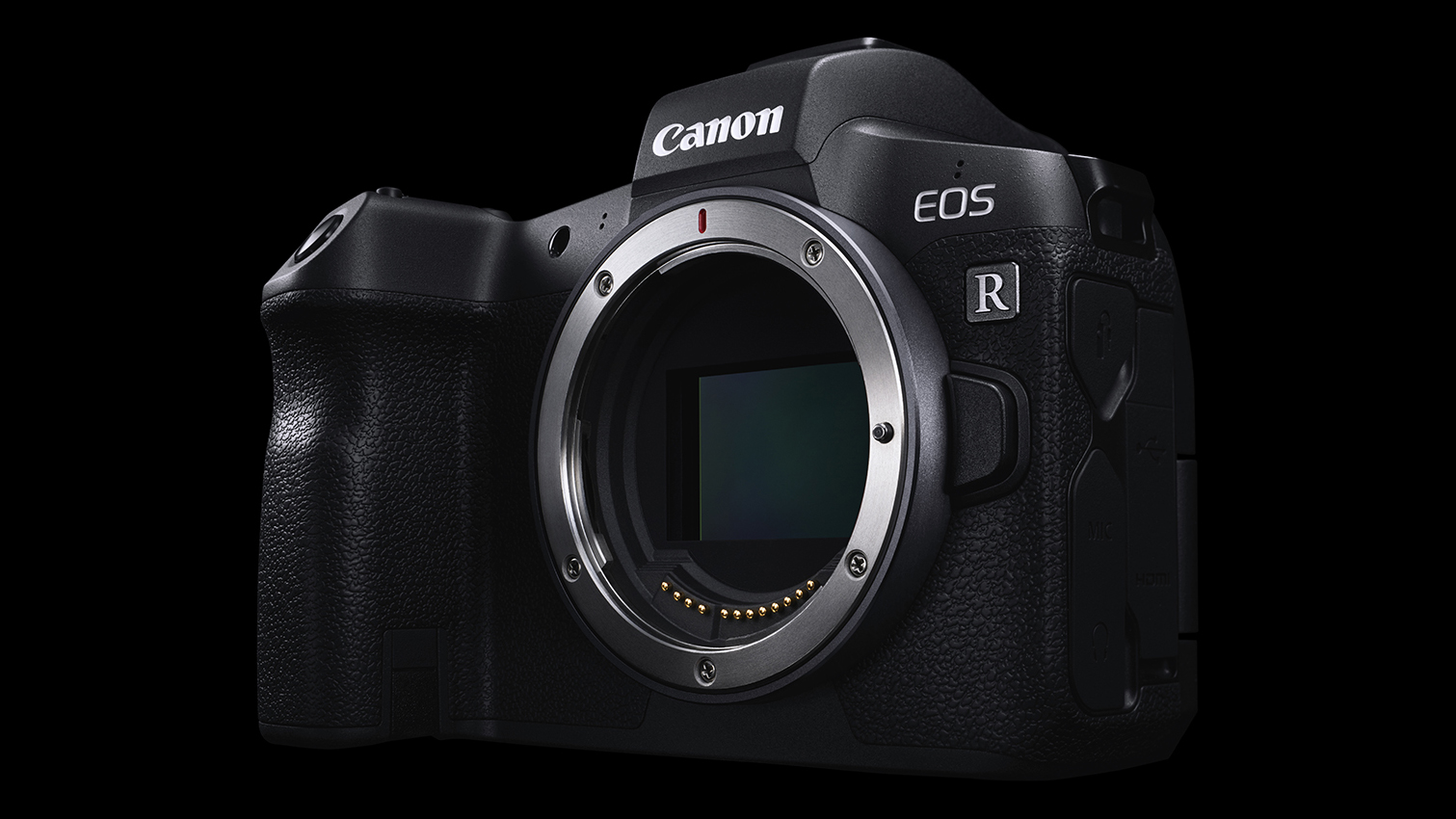
Canon's EOS R is a camera that's blessed with some highly impressive features, but at over £3,000 / $3,000 for the body alone it will only be the lucky few who get to appreciate them. However, Canon's announcement of a significantly cheaper alternative, the EOS RP, should open up its nascent R system to a much wider audience.
The EOS RP carries over many features from its big brother, although in order to be able to launch it at such a low price point Canon has inevitably had to make some concessions. So what are those concessions, and what does the EOS RP offer by comparison with is pricier sibling? Here's what you need to know.
Canon EOS R vs EOS RP: resolution

One of the main differences between the two models is their sensors – there's a 30.3MP (effective) sensor in the EOS R, and a 26.2MP (effective) one in the EOS RP.
This is a much smaller difference than we're used to seeing between two models in the same lineup, so if one suits your needs then the other may well do too. Incidentally, while it appears that the EOS RP's sensor has simply been lifted from the EOS 6D Mark II DSLR, Canon has confirmed that this isn't quite the case.
Canon EOS R vs EOS RP: burst shooting speed
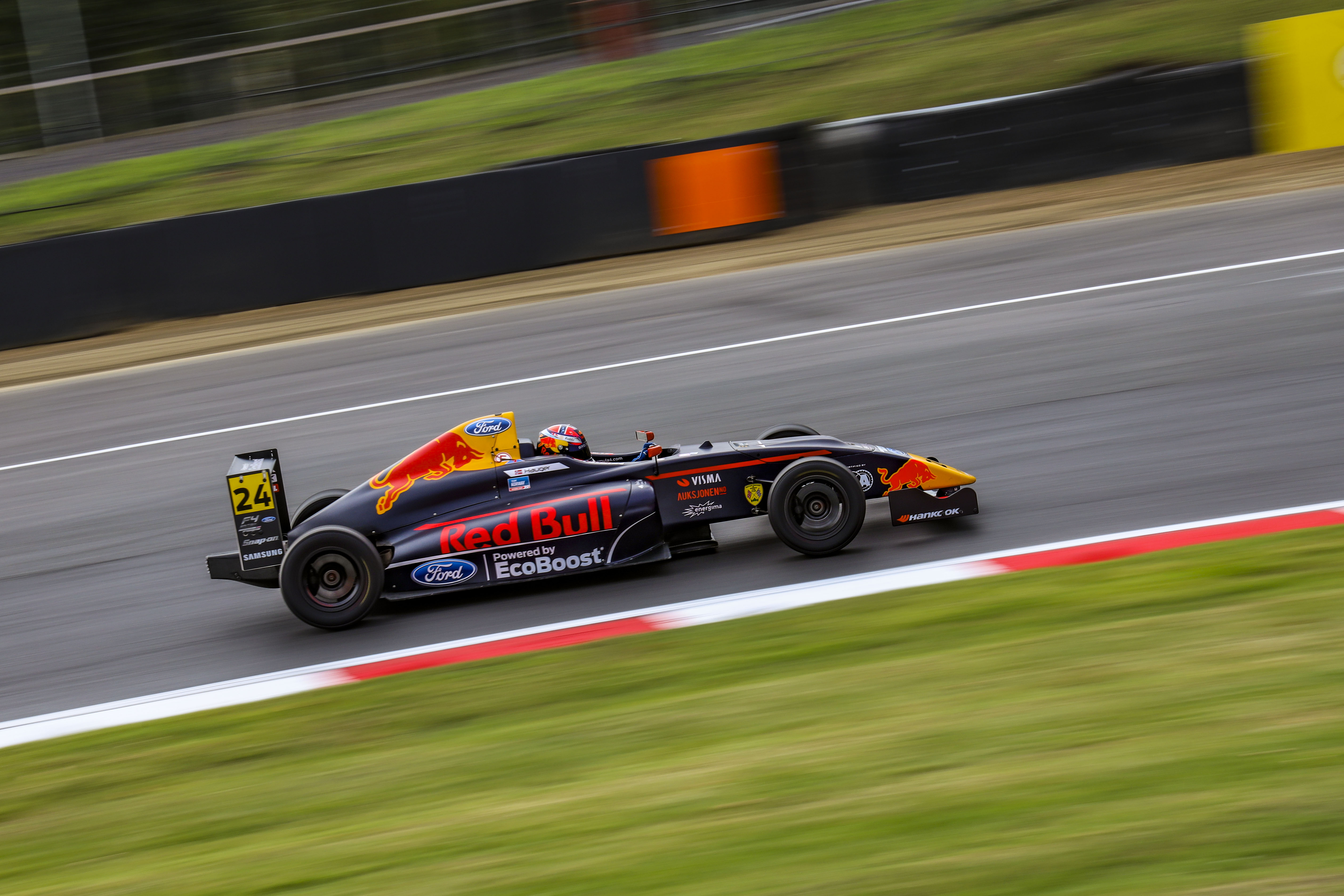
The EOS RP's 5fps burst speed is fairly pedestrian, and when you activate Servo AF (to keep moving subjects in focus) it only manages 4fps. This is easily bettered by the 8fps burst shooting mode on the EOS R, although once you enable Servo AF on that model the rate drops more sharply, to 5fps.
It's fair to say that neither camera is the most suitable option for the sports or action photographer, but we'd be very surprised if Canon doesn't add such a camera to its range at some point.
Canon EOS R vs EOS RP: AF system
While both cameras have been equipped with a Dual Pixel CMOS AF setup to perform speedy phase-detect AF from the main imaging sensor, the working range of the EOS R is a tiny bit better by comparison.
Sign up for breaking news, reviews, opinion, top tech deals, and more.
Canon states that the EOS R can work down to -6EV, while the EOS RP is rated at -5EV. That's still very impressive, but it does mean the former model should retain a slight edge when it comes to focusing in more problematic light.
Both systems do, however, occupy the same stretch of the frame, namely 88% vertically and 100% horizontally.
Canon EOS R vs EOS RP: EVF

The EOS R's 0.5-inch, 3.69 million-dot EVF is undoubtedly one of its finest features – its big, bright and clear, and makes scrutinizing fine details a doddle. We were hoping this would make the cut on the EOS RP too, although when you consider the camera's significantly cheaper asking price it's understandable that it should pack something a little more humble.
And that's exactly what we get: a 0.39-inch viewfinder with a 2.36 million-dot OLED panel. This is the same viewfinder that had been previously designed into the EOS M50, and one that can still very much hold its own.
Canon EOS R vs EOS RP: LCD screen
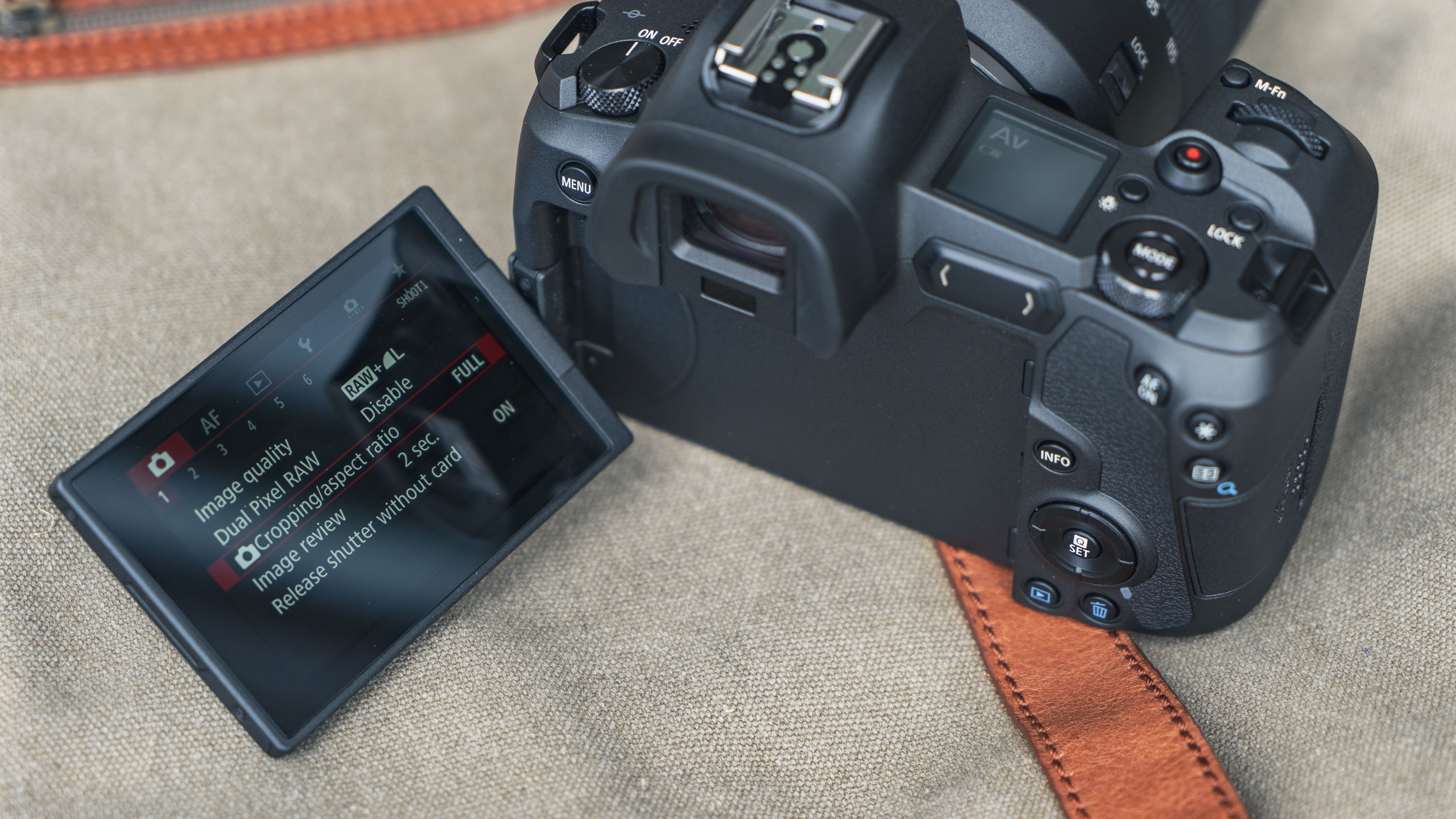
Another thing we love about the EOS R is that glorious 3.15-inch LCD screen, with its 2.1million dots. Given that other manufacturers are now pushing through screens with similar specs, we'd expect nothing less at this level.
Sadly, the newer EOS RP is not blessed with such a display, with a more standard 3-inch LCD with 1.04 million dots in its place, although like the EOS R's panel it also spins around to face the front and all sorts of positions in between, and can be controlled by touch where required.
Canon EOS R vs EOS RP: maximum shutter speed
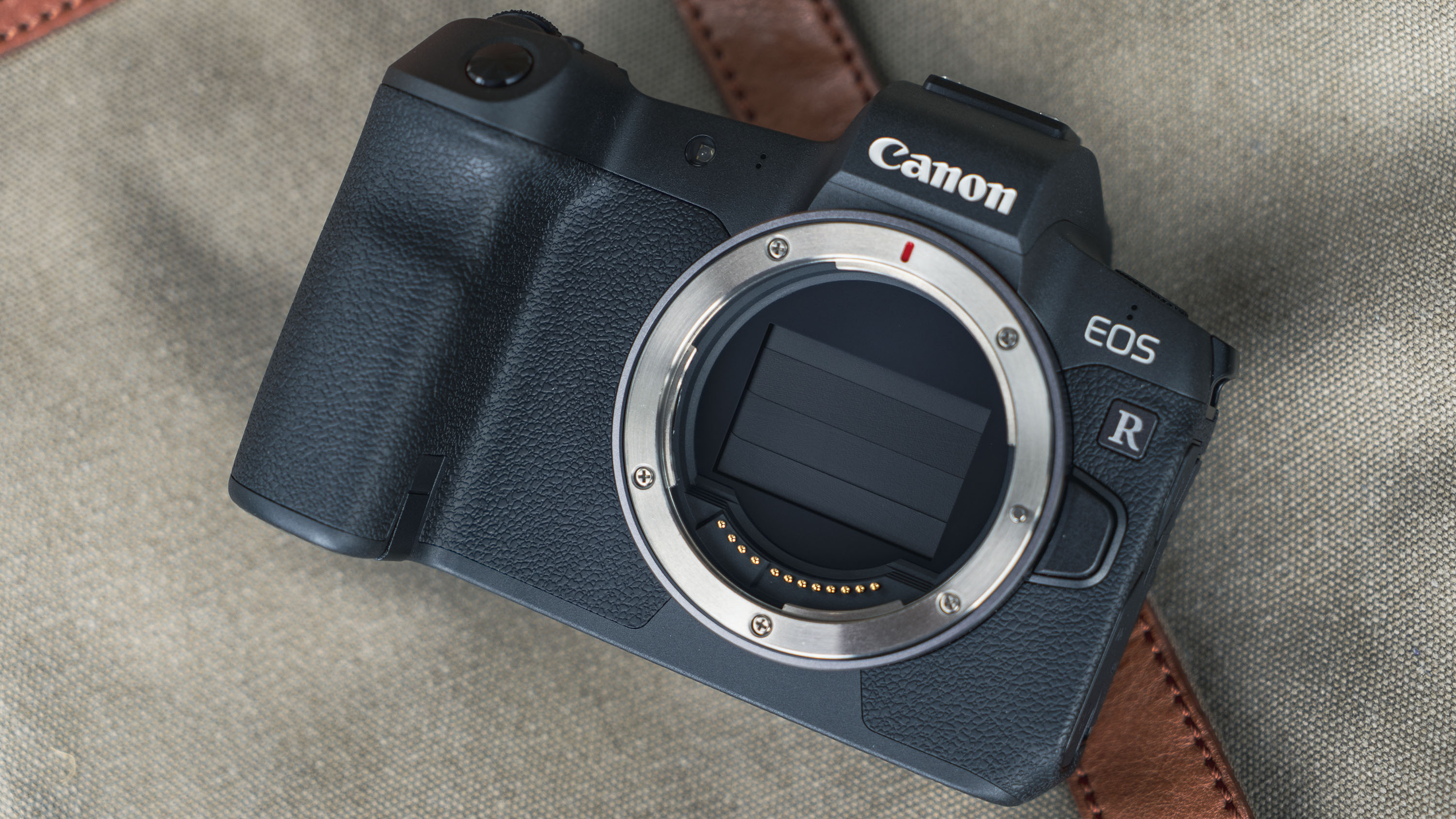
A further difference between the two cameras is that the EOS R's mechanical shutter allows for a top speed of 1/8000 sec, while the EOS RP is limited to 1/4000 sec.
This is a more minor difference than some of the others here, but if you use wide-aperture lenses in bright light with any regularity, it may well be significant.
Canon EOS R vs EOS RP: size and weight
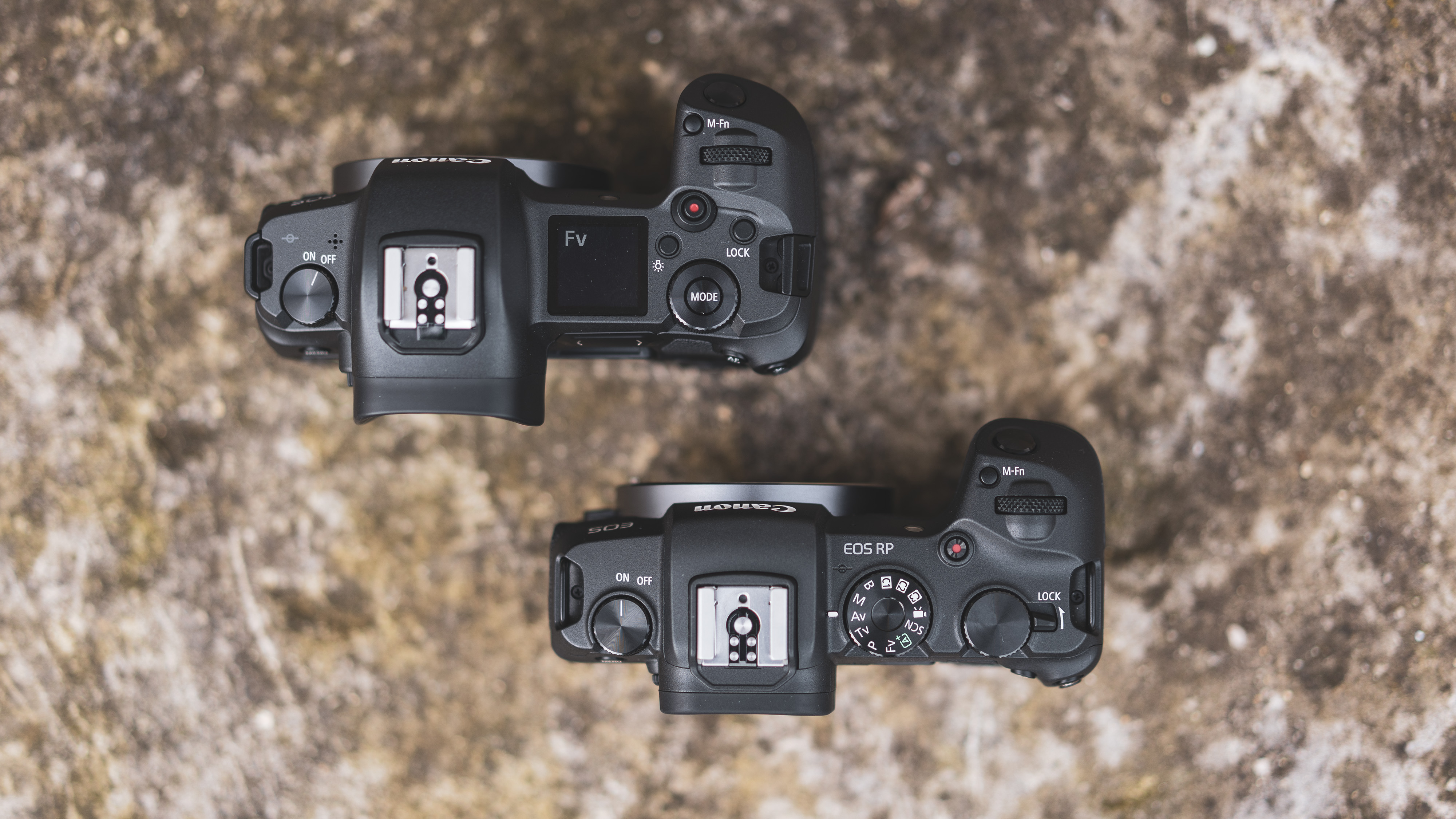
One of the most surprising aspects of the EOS RP is just how petite Canon has managed to make it. With dimensions of just 132.5 x 85 x 70mm, it's a whole lot smaller than the 135.8 x 98.3 x 84.4mm of the EOS R.
Likewise, the EOS RP's body-only weight of 440g without its body or memory card is 140g lighter than the EOS R, and even once you pop those into the body it still weighs an impressive 485g, as opposed to the EOS R's 660g.
Canon EOS R vs EOS RP: battery performance
The EOS R arrived with a CIPA-rated battery life of 350 frames when using the EVF, and 370 when using the LCD screen. That's pretty standard for a mirrorless camera, although short of some of its peers.
Sadly, the EOS RP is significantly worse here, with a battery life of just 250 frames, although Canon hasn't stated whether this is when using the LCD or the EVF.
Canon EOS R vs EOS RP: video features
Both cameras can capture video footage in 4K and Full HD quality, although there are differences elsewhere.
The Dual Pixel AF system can be used when capturing videos on either camera, but it's not available when shooting 4K footage on the EOS RP. The EOS RP is also limited to capturing 4K footage at a maximum 25p, while the EOS R can shoot at up to 30p (and beyond if you opt for Full HD recording).
Both cameras are also subject to a crop when shooting in 4K, which has the obvious disadvantage of making wide-angle framing more difficult.
Canon EOS R vs EOS RP: external controls
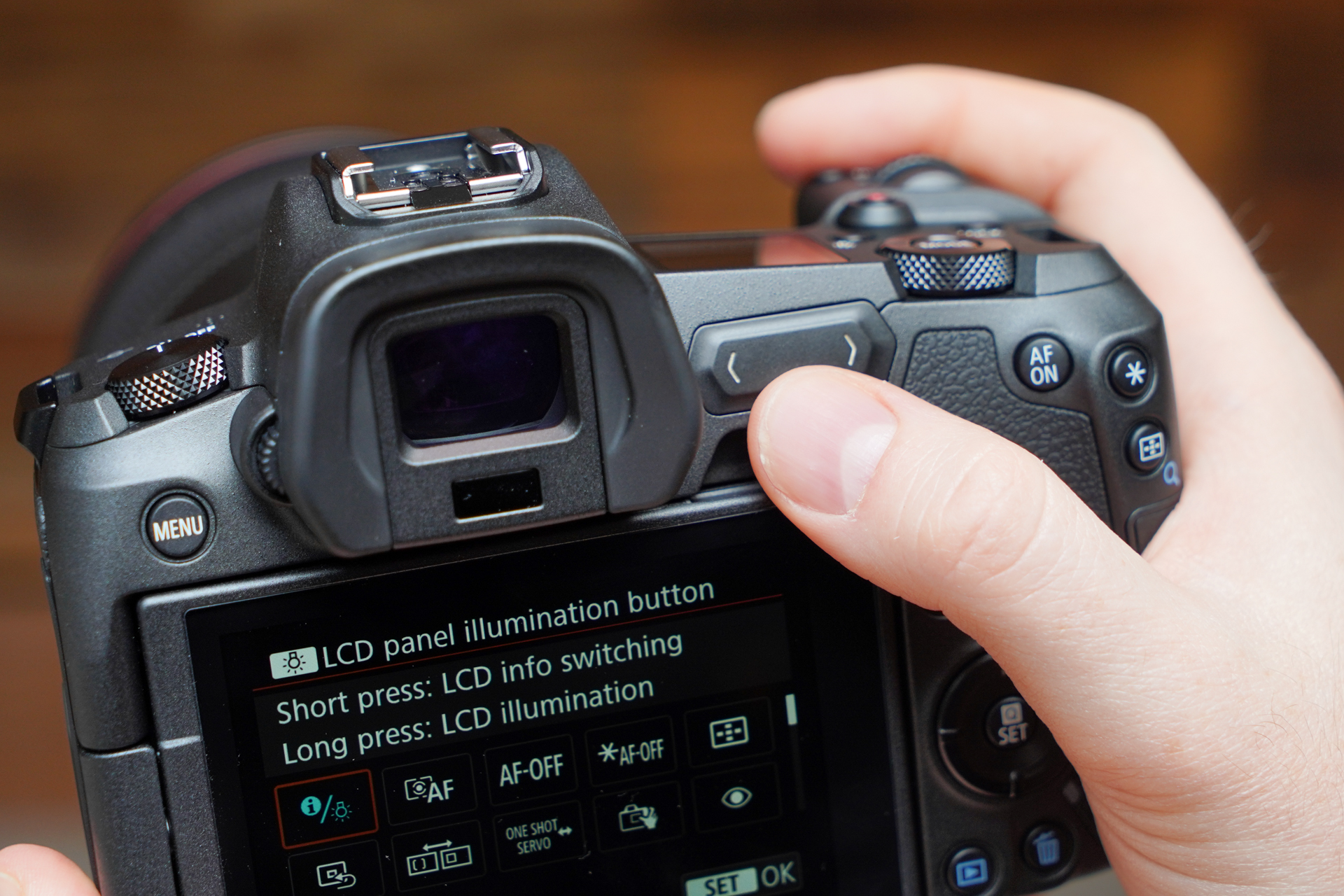
Canon chose to drop the EOS R's M-Fn bar when designing the EOS RP, and also left out the multi-purpose dial from the top plate that works in conjunction with the small LCD to its right-hand side.
Instead of these, the EOS RP has a more conventional mode dial on the top plate with exposure modes clearly marked, and no top-plate LCD screen at all.
The smaller viewfinder inside the EOS RP also means the camera has a flatter top plate than the EOS R.